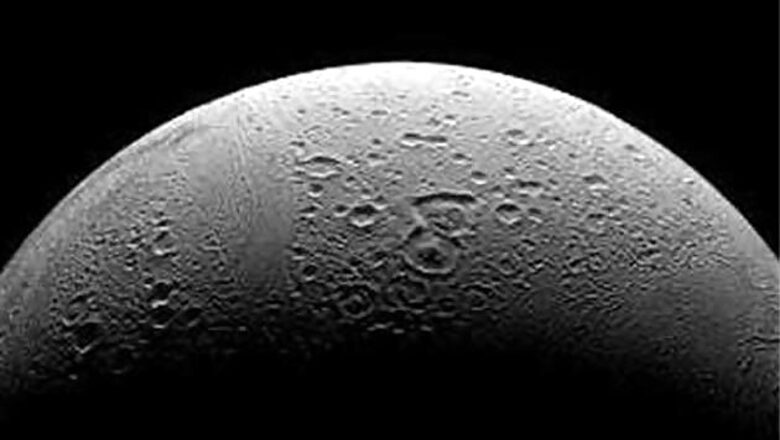
views
Washington: Planetary scientists claim to have for the first time detected presence of oxygen in the atmosphere of Saturn's moon Dione. An international team, led by Los Alamos National Laboratory, says it has discovered molecular oxygen ions in the upper-most atmosphere of Dione, one of the 62 known moons orbiting Saturn, thanks to NASA's Cassini spacecraft, the 'Geophysical Research Letters' journal reported.
Dione - discovered in 1684 by astronomer Giovanni Cassini (after whom the spacecraft was named) - orbits Saturn at roughly the same distance as our own moon orbits Earth.
The tiny moon is a mere 700 miles wide and appears to be a thick, pockmarked layer of water ice surrounding a smaller rock core. As it orbits Saturn every 2.7 days, Dione is bombarded by charged particles (ions) emanating from Saturn's very strong magnetosphere. These ions slam into the surface of Dione, displacing molecular oxygen ions into Dione's thin atmosphere through a process called sputtering.
Molecular oxygen ions are then stripped from Dione's exosphere by Saturn's strong magnetosphere, says the team. A sensor aboard the Cassini spacecraft called the Cassini Plasma Spectrometer detected the oxygen ions in Dione's wake during a flyby of the moon in 2010. Now, the team confirmed the presence of oxygen in the ringed planet's moon.
Team leader Robert Tokar said: "The concentration of oxygen in Dione's atmosphere is roughly similar to what you would find in Earth's atmosphere at an altitude of 300 miles. "It's not enough to sustain life, but - together with similar observations of other moons around Saturn and Jupiter - these are definitive examples of a process by which a lot of oxygen can be produced in icy celestial bodies that are bombarded by charged particles or photons from the Sun or whatever light source happens to be nearby."


















Comments
0 comment